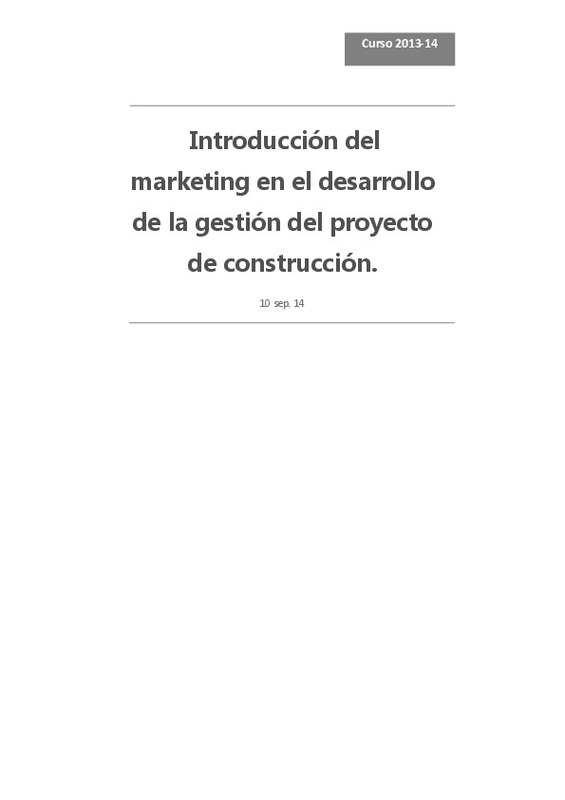JavaScript is disabled for your browser. Some features of this site may not work without it.
Buscar en RiuNet
Listar
Mi cuenta
Estadísticas
Ayuda RiuNet
Admin. UPV
Introducción del marketing en el desarrollo de la gestión del proyecto de construcción
Mostrar el registro completo del ítem
Bravo Mengual, M. (2014). Introducción del marketing en el desarrollo de la gestión del proyecto de construcción. http://hdl.handle.net/10251/48866.
Por favor, use este identificador para citar o enlazar este ítem: http://hdl.handle.net/10251/48866
Ficheros en el ítem
Metadatos del ítem
| Título: | Introducción del marketing en el desarrollo de la gestión del proyecto de construcción | |||
| Autor: | Bravo Mengual, Margarita | |||
| Director(es): | ||||
| Entidad UPV: |
|
|||
| Fecha acto/lectura: |
|
|||
| Resumen: |
[ES] Este Trabajo Fin de Grado consiste en el estudio y análisis del marketing inmobiliario en el desarrollo de la gestión de un proyecto de construcción. Se centra en las percepciones que tiene el usuario ante los ...[+]
[EN] The aim of this final project degree consists on the study and analysis of the real estate marketing to develop the management of a construction project. The project focuses on the perceptions felt by the customers ...[+]
|
|||
| Palabras clave: |
|
|||
| Derechos de uso: | Reconocimiento - No comercial - Sin obra derivada (by-nc-nd) | |||
| Editorial: |
|
|||
| Titulación: |
|
|||
| Tipo: |
|
recommendations
Este ítem aparece en la(s) siguiente(s) colección(ones)
-
ETSIE - Trabajos académicos [2388]
Escuela Técnica Superior de Ingenieria de Edificación







